-

Warsaw’s Palace of Culture and Science: white elephant or national treasure?
Text by Agnieszka Rasmus-Zgorzelska
Photography by Jacek Fota -
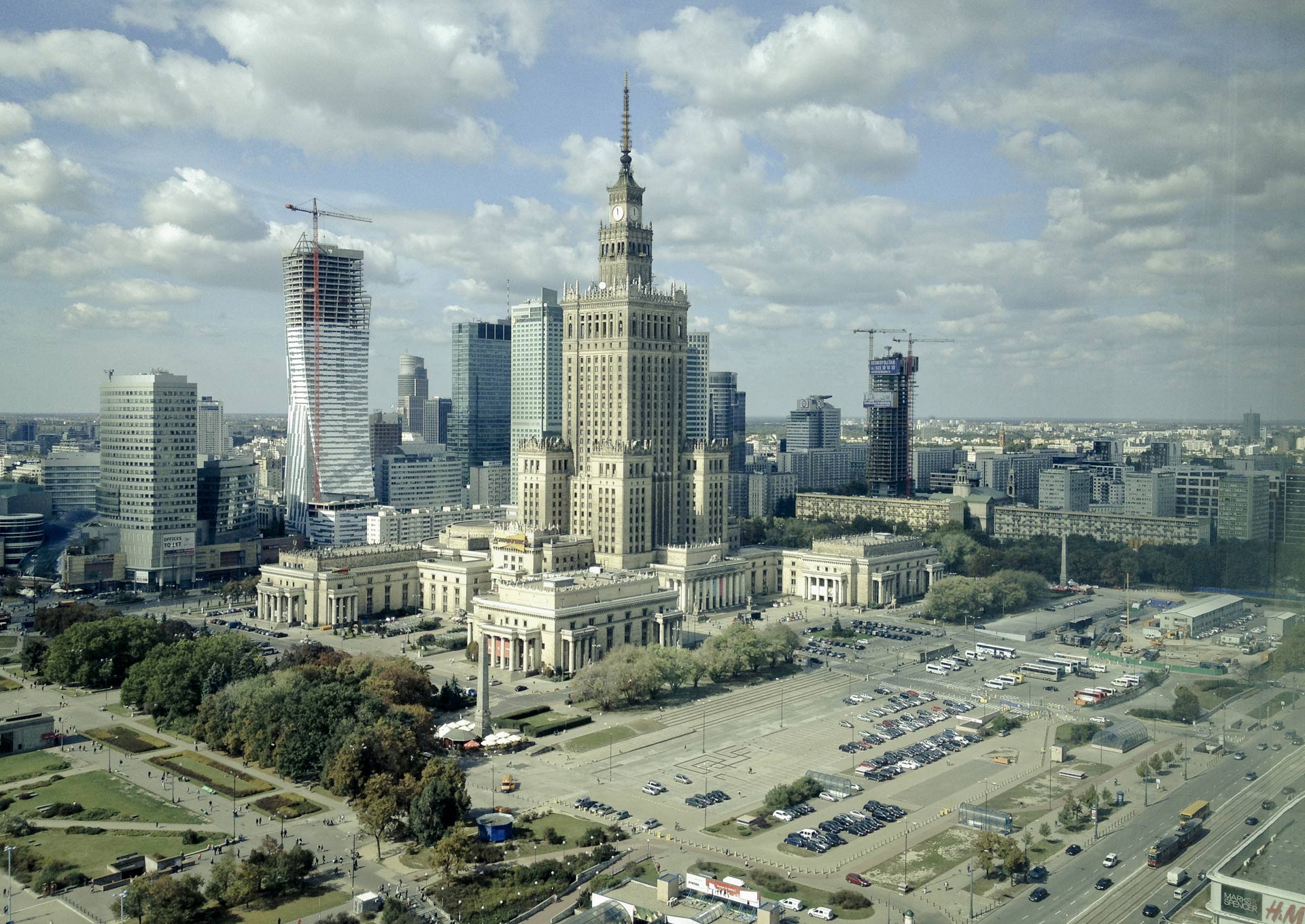
Daniel Libeskind’s Złota 44‚ seen here on the left during its construction‚ is one of several recent‚ towering additions to Warsaw's skyline. (Photo this page only: Lara Eurdolian)
With the new wave of representative cultural buildings popping up all over Poland, Warsaw-based Agnieszka Rasmus-Zgorzelska takes a close look at the city’s most prominent cultural icon: the huge Palace of Culture and Science, a “contaminated gift” in the 1950s from Stalinist Russia to the young communist People’s Republic of Poland.
-
Even today the Palace of Culture and Science in Warsaw remains both a symbol of sinister Stalinist domination and a beloved icon for those of us who live in the city. Whole urban districts dating from the nineteenth century, largely damaged during the war, were devoured to make place for its gargantuan body and imposing parade ground. It is disconnected from the city centre and yet sits at its very heart. Before its vast expanse, we are either paralysed and powerless – or seduced. 2015 marks the 60th anniversary of the Palace and a series of publications and events are coming up. Will they break the spell this building still holds over our city and citizens?
Conceived as “a gift from the Russian people to the Polish nation”, the Palace was almost fully financed by the USSR, designed by Soviet architect Lew Rudniew, and built between 1952-55 by an army of 3,500 Russian builders. Modelled on the Stalinist “Seven Sisters” skyscrapers defining the 1953 Moscow skyline (themselves inspired by American architecture), it was nicknamed the “Eighth Sister”. With its functional programme it was clear that culture would take precedence over badly needed housing – and the form of the building took centre stage: The intention was to be “socialist in content, national in form”, yet, with a rather vague notion of the “national”, details were borrowed from historical monuments from various Polish towns. Perverse as it was for a poor post-war country, the interiors were fitted out by the best Polish craftsmen who made elaborate glass and ceramic lamps, wood panelling and custom designed furniture.After 1989 the Palace continued, as before, to be home to popular theatres, museums, a cinema, auditorium, swimming pool and viewing platform – supplemented by commercial offices and space for rent. With the newly regained economic freedom the surrounding Parade Square proved a convenient site for provisional stalls, later replaced with temporary covered markets. However, their ugliness was so incongruous with the ambitions of a city defining itself anew that they were finally pulled down, to make way for a “more civilised” use, which turned out to be a series of guerrilla coach stops for buses shuttling to satellite towns, and a vast parking lot in a dishearteningly dilapidated space. This is the current state of the Square in 2015.
-
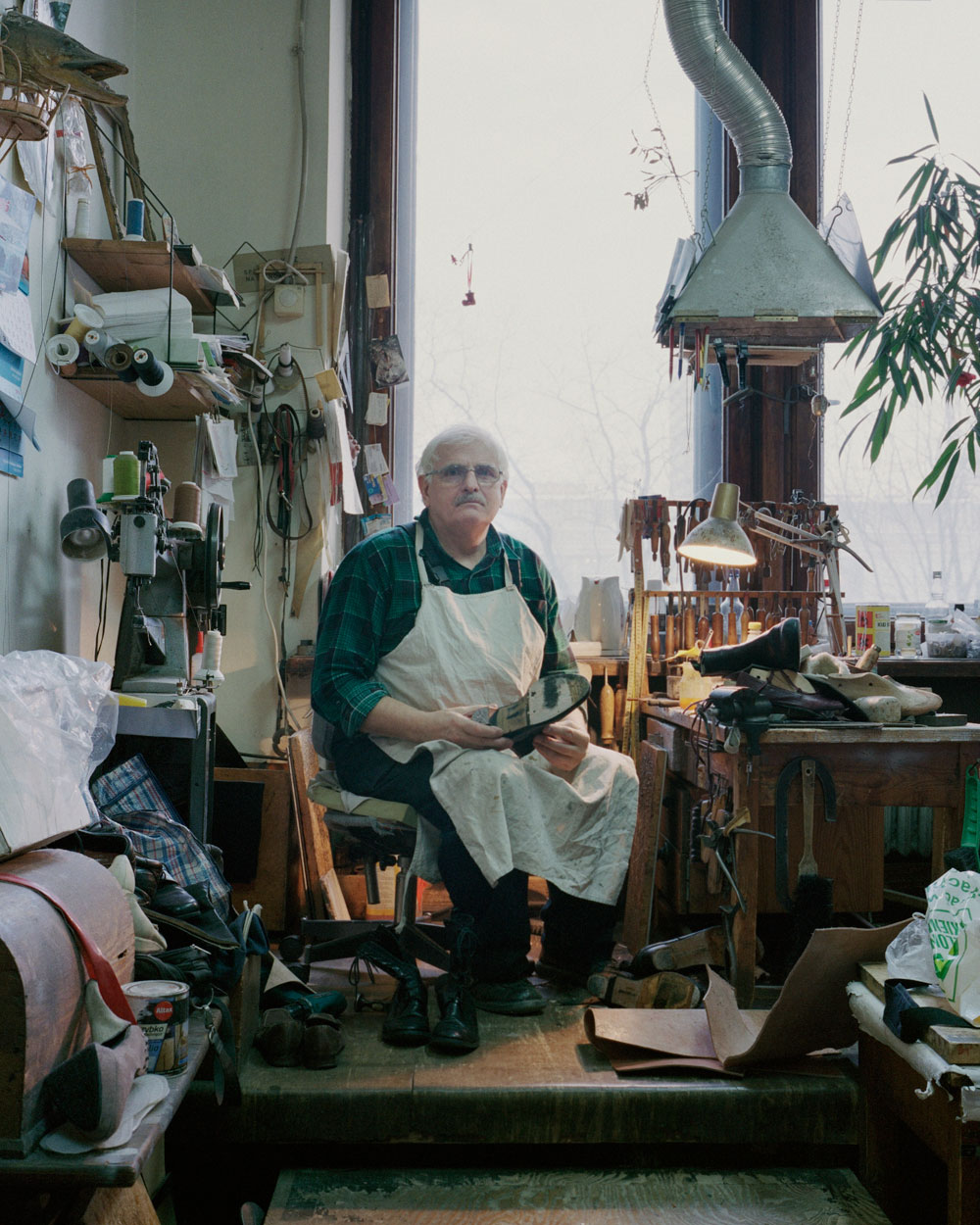
Władysław - shoemaker at the “Dramatyczny” theatre
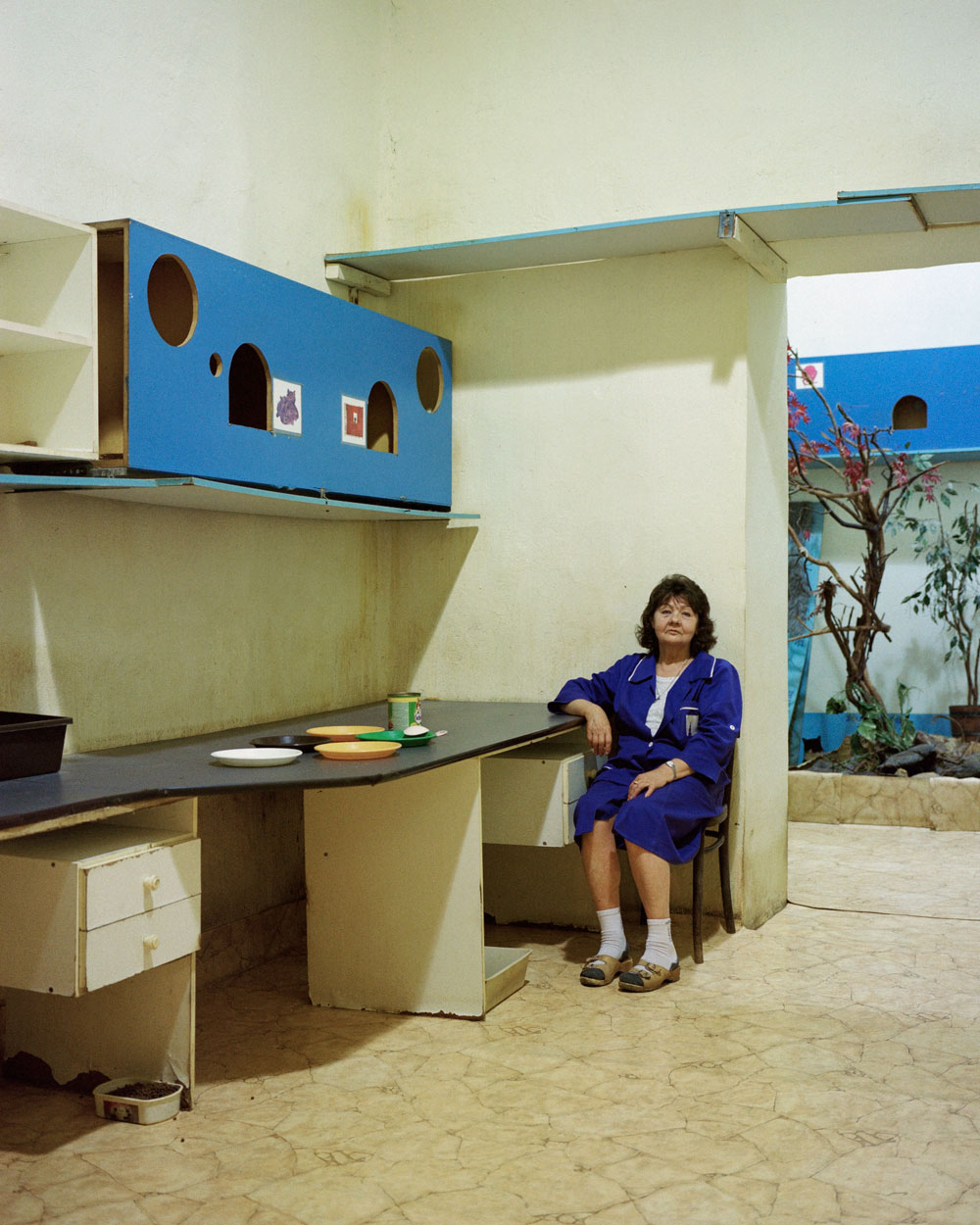
Celina - a cat keeper inside the “Cat Paradise”
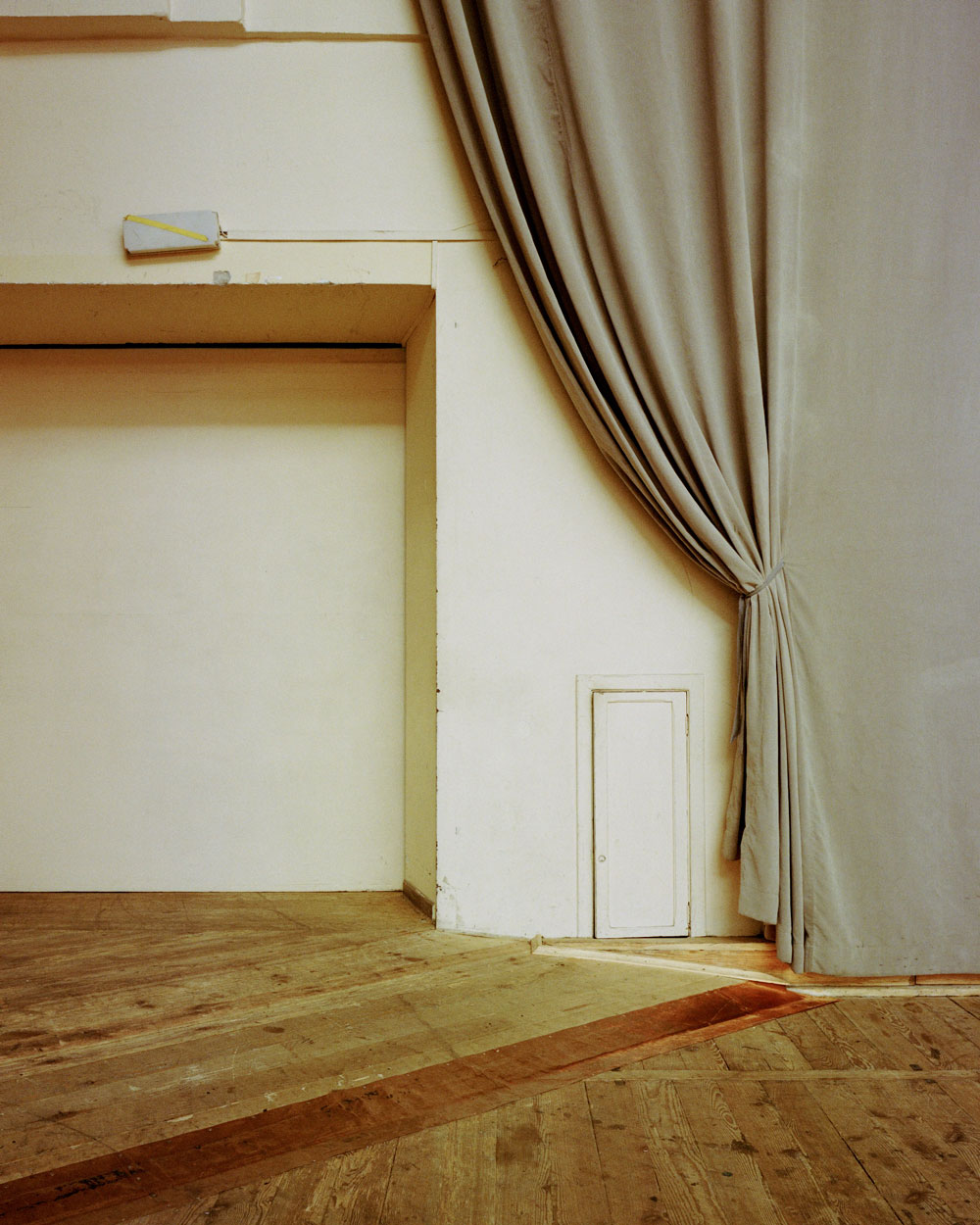
The stage at the Sala Kongresowa (Congress Hall)
-
»a gift from the Russian people to the Polish nation«
Backstage during a production of the play “Młody Stalin” at Dramatyczny theatre.
-
At least three versions of a plan were made for the Palace and its surroundings in post-communist Warsaw. The first, from 1992, comprised several alternative propositions, the main one had a “Warsaw Crown” of towers arranged in a circle. Focused on a high-rise vision, the plan aimed at diminishing the Palace’s domination, yet accepted it by adjusting the whole symmetrical composition around its centrality. It evoked fierce public discussion but in the end no action was taken. In an atmosphere of general inertia the architects dropped the project. Then there was a political change in the city government and new energy appeared. Another plan was made, this time encompassing low-rise buildings, an agora and included a new Museum of Modern Art: an open, contemporary building as a new symbol of Warsaw.
As it turned out, during an unsuccessful attempt at realising this museum with a design by Christian Kerez, the city had not solved the fundamental problem of land ownership. Following the Bierut Decree from 1945, all Warsaw properties were nationalised. Yet with the return of capitalism, the Parade Square returned to being a chessboard of smaller plots, many of which remain stuck in the process of reprivatisation to this day. Another plan was approved in 2010, basically a compilation of numerous former versions, allowing again for high-rise building, higher density and a more versatile functional programme. However, apart from the Museum of Modern Art, which is now to be designed by American architect Thomas Phifer in the north-eastern corner of the square, the current city government does not seem to be undertaking any further action. Is there a psychological barrier that has made it so difficult to tackle the space in the Palace’s shadow? Ever since its completion, the building has evoked such strong emotions that its demolition has been proposed several times since 1989. Yet these tended to be rather isolated calls, and its entire destruction was officially never seriously considered, indeed in 2007, the Palace was finally listed. -
While the palace is undergoing slow but consistent refurbishment inside, it offers, as ever, a vivid and varied cultural and social programme, with its two theatres, the best puppet theatre in town, one museum for technology and one for evolution, as well as a cinema to name just the main elements. The Palace of Youth, which shares the north-western wing with a swimming pool, complete with a diving platform, has become home to numerous highly popular and accessible extracurricular courses.
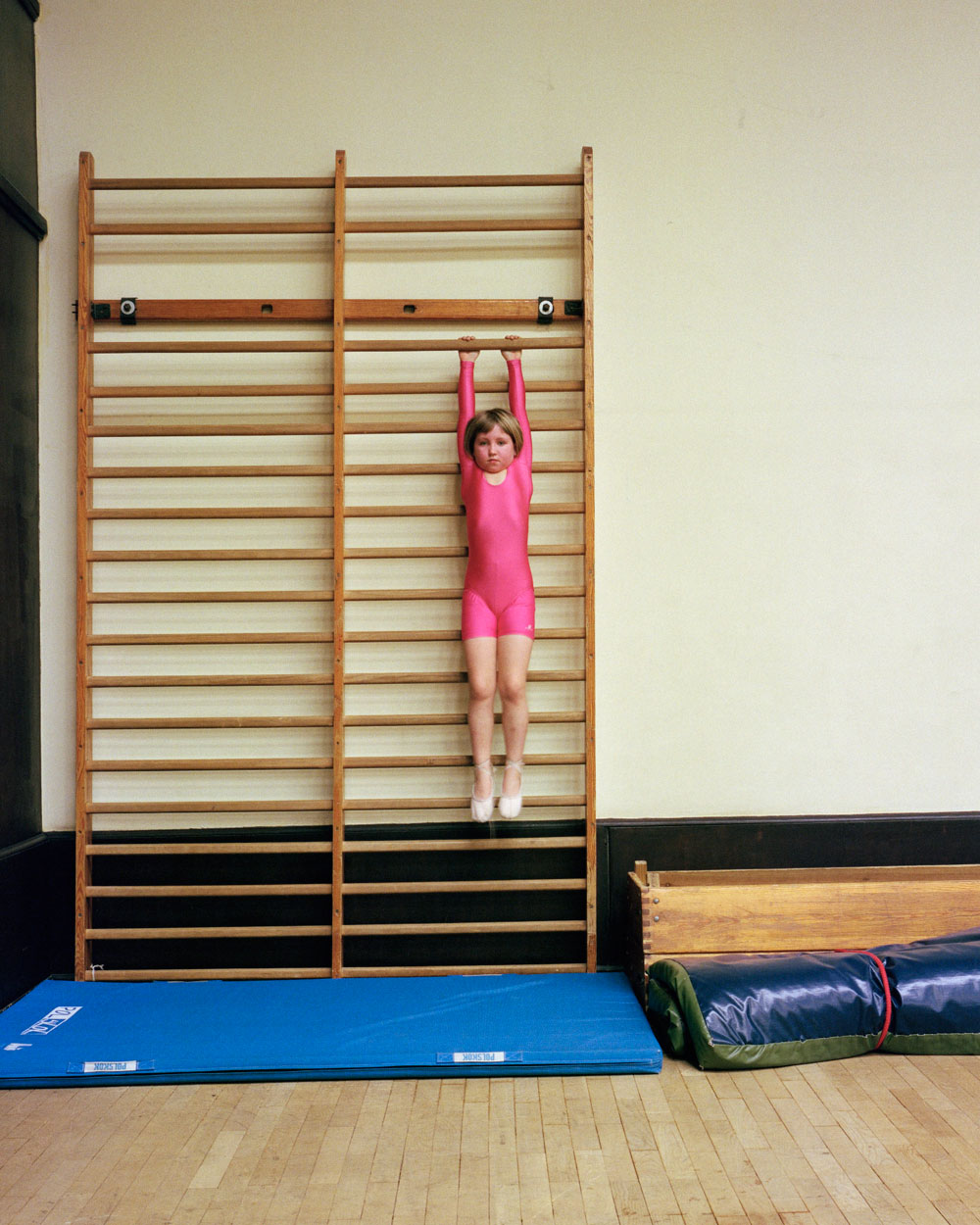
In the meantime, to the west of the square and next to the central train station, Warszawa Centralna, a cluster of skyscrapers has been added to Warsaw’s financial district. Their designers include big international firms like SOM, Helmut Jahn and Daniel Libeskind (building for the first time in the country of his birth). Libeskind’s residential tower was allegedly consciously designed to outshine the palace. In the event it has proved even uglier than the renderings promised, and its interior remains unfinished since the developer went bankrupt.
Marianna – a rhythmic gymnastics student inside a gymnasium at the Pałac Młodzieży (Palace of Youth).
-
Agnieszka Rasmus-Zgorzelska is an independent, Warsaw-based architectural author, editor and curator. She is also co-founder of the Centrum Architektury in Warsaw.
centrumarchitektury.orgPhotographer Jacek Fota graduated with a masters degree from the University of Utah, USA before returning to his native Poland and getting involved with documentray photography. He received a scholarship from the city of Warsaw to develop a new book, PKiN, which will be published in June 2015.
jacekfota.com
Quite obviously, none of the new skyscrapers have the quality to seriously threaten the craftsmanship that was put in the façades and public interiors of the Palace. Also, since no serious masterplan for Warsaw’s city centre exists, it becomes apparent that all these big buildings don’t create a new, interesting collective but remain egocentric entities, each one only interested in itself. The Palace, a product of Stalinist ideology, has now simply been joined in the city centre by some products of capitalism. Will they ever start talking to each other, one wonders, turning the dead void of Warsaw’s most important square into lively, democratic chaos? I
Gymnasium at the Pałac Młodzieży (Palace of Youth).
-
Search
-
FIND PRODUCTS
PRODUCT GROUP
- Building Materials
- Building Panels
- Building technology
- Façade
- Fittings
- Heating, Cooling, Ventilation
- Interior
- Roof
- Sanitary facilities
MANUFACTURER
- 3A Composites
- Alape
- Armstrong
- Caparol
- Eternit
- FSB
- Gira
- Hagemeister
- JUNG
- Kaldewei
- Lamberts
- Leicht
- Solarlux
- Steininger Designers
- Stiebel Eltron
- Velux
- Warema
- Wilkhahn
-
Follow Us
Tumblr
New and existing Tumblr users can connect with uncube and share our visual diary.
»Architectural interpretations accepted without reflection could obscure the search for signs of a true nature and a higher order.«
Louis Isadore Kahn
Keyboard Shortcuts
- Supermenu
- Skip Articles
- Turn Pages
- Contents


